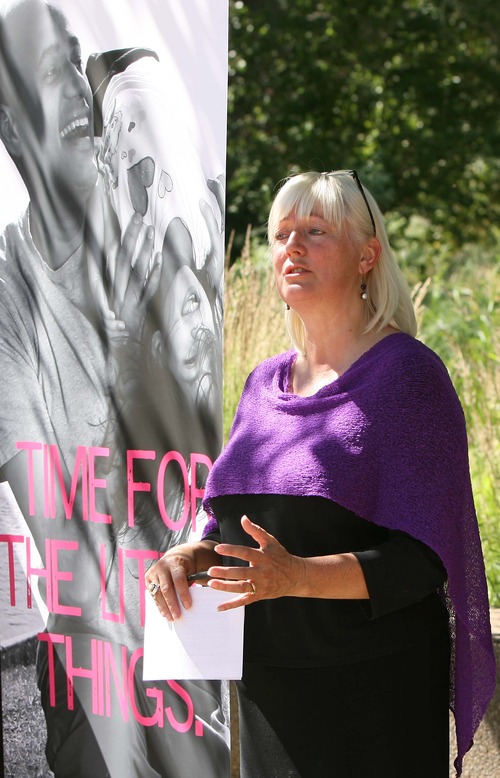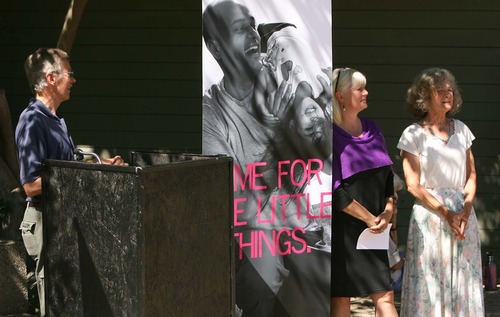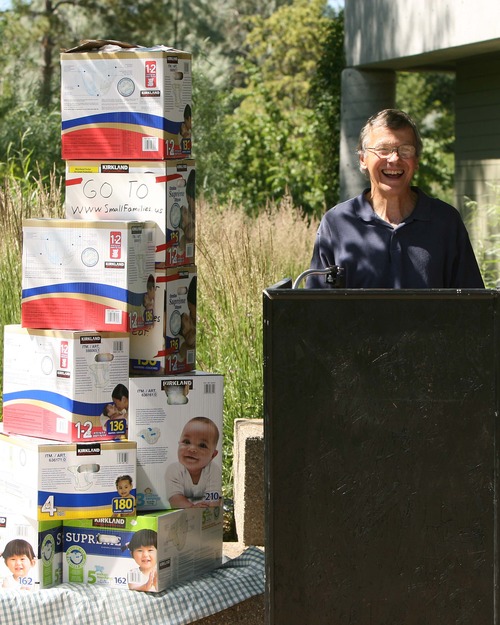This is an archived article that was published on sltrib.com in 2013, and information in the article may be outdated. It is provided only for personal research purposes and may not be reprinted.
The presentation started Wednesday with 1,530 (thankfully) clean diapers stacked in boxes at the Day-Riverside Library in Rose Park.
The pile sat between posters marking the start of the "It's OK to Plan Small Families" campaign, launched by the Utah Population and Environment Coalition.
"We knew this topic was sensitive, and we wanted to treat it with the care and respect that it deserved," group chairwoman Susan Soleil said.
The campaign in the nation's most fertile state — the big-family capital — will have three components: a new website, radio ads and billboards along Utah's highways that will stand through mid-September.
The group trod lightly in its news conference, and statements about the purpose of the campaign varied from controlling Utah's exploding population and conserving resources to encouraging conversations about family planning.
"We are not pushing contraception, but rather we are honoring the right of each couple to choose the family size that is right for them," Soleil said, adding that the group isn't criticizing or making judgments against large families.
Pam Perlich, senior research economist at the University of Utah, said a good indicator for population growth — among other factors — is total fertility rate, which measures how many children a woman could have over the course of her childbearing span.
For a population to maintain itself, the fertility rate should be around 2.1. "The number for Utah is 2.5," Perlich said, while the national rate was just below 2.
The rate at which Utah women have children has decreased since 1960, when the fertility rate was about 4.4. Perlich said she expects the rates to increase as the economy rebounds and families gain confidence for planning.
When childbearing rates drop, and there are no major swings in other factors like in-migration, "you have a population where old folks outnumber young folks basically," Perlich said. Japan is dealing with an extremely large elder population due to sustained low fertility rates.
Utah consistently has the highest birthrate in the nation.
Soleil said the goal of the campaign isn't so much to influence family size as it is to let people know they should plan what's best for them.
"When those very personal decisions are made with hearts full of love, and include weighing all of the variables such as financial, emotional, physical and environmental considerations, couples will find their perfect family size," Soleil said.
Though the group said there was no indicator of what a successful campaign would look like, Soleil said starting a conversation and getting visitors to interact and share stories with the new website would make it a success.
Utah's population nearly doubled over the past three decades, passing 2.8 million in 2012. It is consistently one of the fastest-growing states in the nation, in part because of high fertility and in-migration rates.







